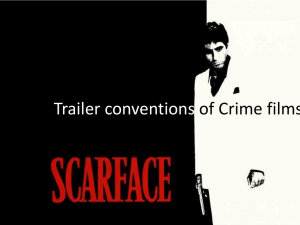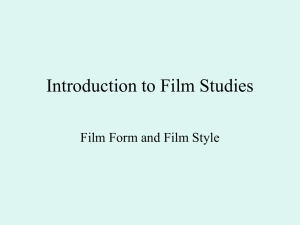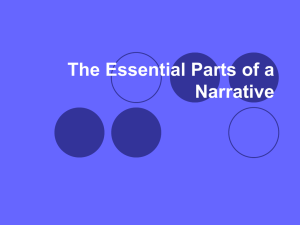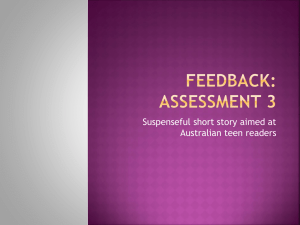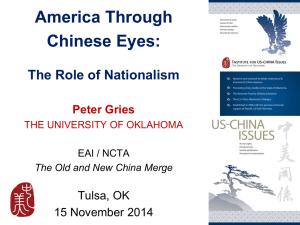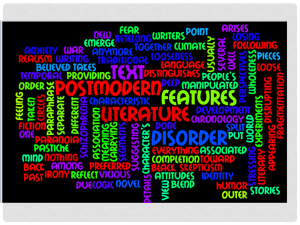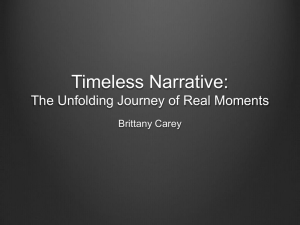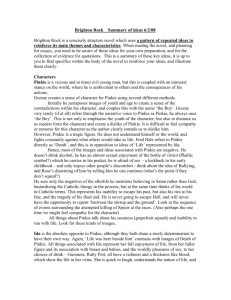Snatch
advertisement
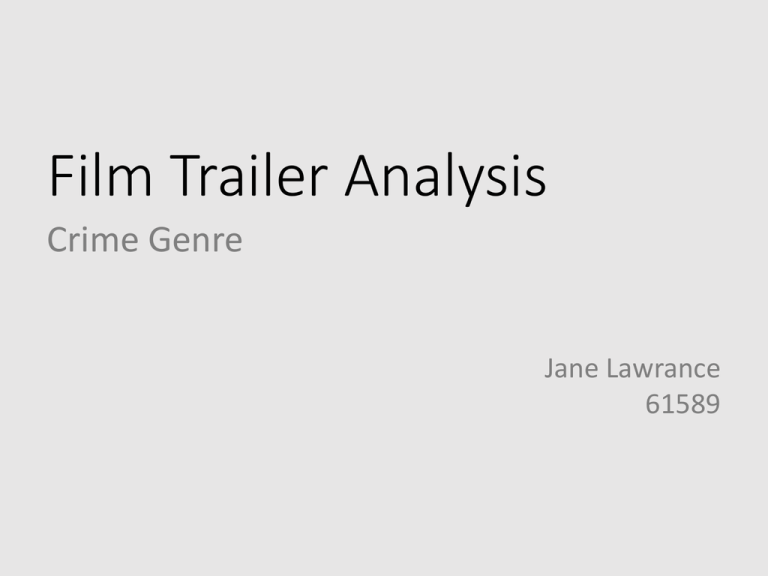
Film Trailer Analysis Crime Genre Jane Lawrance 61589 Snatch (2000) Guy Ritchie http://www.youtube.com/watch?v=lUloT3Dh3-E Snatch – British Crime Snatch (2000) is a hybrid British crime film using iconography from the 1960s. This incorporates; Crime capers and spaghetti westerns as well as bringing in themes from 1980s gritty gangland and heist films. Postmodern elements include; high art editing and challenging representations and narrative themes. Characters The Protagonist and Helper – Turkish and Tommy – anti heroes The Antagonist – Cousin Avi American Gang Leader Stereotype The second Helper – Mickey – Gypsy (Pikey) Stereotype –can’t understand what he is saying. Turns out to be good in the end. The second Antagonist – Brick Top – British Gang Leader Stereotype. No female roles? Narrative Structure Act 1 – introduces the narrative equilibrium. Themes include: Diamond heist by the American gang hinted at through the voice over of Turkish (Main Protagonist) who is also linked to the parallel plot of boxing matches. Act 2 – The Disruption. Highlighted with key texts “Where is the stone” and “you’re going down” hint at rigged fights. Then the montage of action shots from the fight, “woops”. Act 3 – The cast are introduced using time remapping, spaghetti western influenced graphic sequence with further hints at attempts to ‘fix’ the disruption. The graphics used have an almost graphic novel feel to them. Camera/ Mise-en-Scene Skewed framing gives a postmodern feel of unease to the narrative and characters. Props are used to establish iconography. E.g. guns, crime. Trench coats suggest the characters are shady but smart. Low key lighting gives it a “Noir-ish” quality. Half light is used on characters to create a more dark feel, set in the darker side of life, rigged boxing matches etc. Costume help to establish stereotypes within the narrative, testing postmodern notions of challenging representations. Set establishes the bleak underworld – illegal bare knuckle boxing arenas. Editing Postmodern Editing – Time remapping (Guy Ritchie uses this a lot) used to accentuate action in scene and excite the spectator. Still framing used as an anti-narrative device. Helps to highlight key frames of action and with the added voiceover of Turkish allows the audience to connect with the protagonist throughout the trailer and helps to drive key narrative points. Still frames are also used to highlight characters using heavily stylised graphics. These use graphic novel styles and spaghetti western fonts. Both of these films are also seen within the Soundtrack. Sound Voiceover – using the Turkish (protagonist) to set up the narrative and themes. An antihero with a cheeky cockney drawl, establishes the ‘crime capers’ element. Fast paced ‘remixed’ dance music drives the action. Remix of 1970s iconic “Apache” Incredible Bongo Bands. Diegetic sound uses dialogue from key characters to help drive the narrative. Non- diegetic sound effects such as ‘fast rewind; used as visuals and editing speeds up. Brighton Rock (2010) Rowan Joffe http://www.youtube.com/watch?v=gwImMuLnZ-U Brighton Rock – British Crime Brighton Rock (2010) is a remake of the 1947 film by John Boulting. It has taken the story from the original film and slightly updated it, it is now set in the 1960s and uses iconic imagery from this period. Postmodern elements include: Pastiche, intertextuality and Bricolage. Characters The Protagonist – Pinkie Brown – stereotypical character to be an antagonist, British gangster The Antagonist/ Helper- Frank Splicer – British gangster The Damsel – Rose The Female Antagonist – Mrs Arnold The Victim – Fred Hale Narrative Structure Act 1 – Hint at disruptions through the use of dark music, suggested violence and low key lighting. Act 2 – The Murder. Violence is shown, a man is being chased by people that are later seen talking to rose. Mrs Arnold is shown as a strong female figure threatening the men a femme fatale. Act 3 – Hint at resolution through Pinkie being shown as less violent towards Rose (kissing in the rain, dancing in the ballroom). Rose and Pinkie are together “Your good and I’m bad we are made for each other” – classic clique kissing in the dark. There is a trust between them Rose isn’t scared of his violent side, cliff scene and she takes the gun from him on the pier. Camera/ Mise-en-Scene Low key lighting and use of half shadow gives the film a “Noir- ish” style as well as this shots of the pier appear sepia like the pictures that are shown on the pier at the beginning. Costumes help bring forward the era of the piece as well as the use of Bricolage in the use of iconic props for example the Vespa’s suggest the 1960s and hold connotations of Mods and Rockers, as well as this Pinkie has his hair styled like a mod, slicked back and he wears sharp suits which is seen in the trailer were he dresses himself. Interesting shot that follows Pinkie as he moves through a hall way, slow pan gives the illusion of being a track. Pastiche is used in reference to the original film there are lots of aspects borrowed iconic images for example; the cut that appears on Pinkie’s cheek. Reflections used to show faces, commonly found in dark crime or thriller films as well as this we see an interesting use of lighting within the church scene where light comes through in pillars from the windows. The dark shot of the oceans suggests a sense of the unstoppable deadliness before the trailer has begun (a force of nature). Editing Inventive use of transitions throughout the trailer, simple cuts, lots of dips to black (reminiscent of Film Noir conventions) and one transition where they use the flash of an old style camera to create a white flash to transition to the next shot – this brings a real sense of darkness to the next scene. There is a static shot of the pier which is edited to look sepia, use of iconic location, the aged colour allows the audience to register it is set in the past as well as this exposition is used to tell us the date. Flash backs are used in this piece, the fast editing between shots in the murder scene allow the audience to see the violence and the effects of the violence quickly. Silhouetted shots of the pier are used to create the feel of antique pictures like those seen on the pier during the trailer. Sound Lots of diegetic sound is used to create an atmosphere. Waves, seagulls, fog horns ect. Voice over is used to introduce our two main characters Pinkie and Frank, both of which have threatening sounding voices. Having two voiceovers doesn’t normally happen in a crime film such as this the story normally has one perspective and so having this dual narrative from the beginning helps the audiences to distinguish characters and may suggest that these two people may not necessarily be on the same side. Dialogue used in the piece is to set up the story, most of the language is either threatening gangster related dialogue from Frank or conversation between Pinkie and Rose. This sets up opposing themes in the trailer as well as connecting Frank and Pinkie through the girl. Se7en (1995) David Fincher http://www.youtube.com/watch?v=J4YV2_TcCoE Se7en – Crime Thriller Se7en (1995) is a crime thriller that plays with the idea of the seven deadly sins. It follows detectives Somerset (Morgan Freeman) and Mills (Brad Pitt) as they investigate a series of disturbing murders linked with the seven deadly sins. Postmodern elements include; challenging narratives and ideologies, intertextuality and blurred genres. Characters The Protagonist – Detective Somerset (Freeman) – Stereotypical Hero Helper – Detective Mills (Pitt) – more of a ‘postmodern cowboy’ isn’t a hero at the start. Suggested Damsel – Tracy (Mill’s wife), she is the only women we see, blonde, slightly ditsy. Not associated with the darkness of the rest of the trailer. Antagonist – The Murderer – we see a glimpse of the victims but not the murderer we are just given a sense of this ominous force being there…seven deadly sins… it could be suggested that the murderer is associated with the devil through his lack of concrete identity. Narrative Structure Act 1 – we are introduced to the two main characters and what they are like. Interesting that we see Brad Pitt first instead of Morgan Freeman. Act 2 – almost straight away we see the suggestion of a murder. A serial killer. And we are made aware that Detective Somerset sees these things everyday. Act 3 – Not that much of a hint a resolution. Only that they figure out that there are two more murders that are going to happen for all seven sins to have been completed so they are close to the end of the case. The only hint at something bright and happy is the white light we see Tracy (Gwyneth Paltrow) in, in every shot of her in the trailer, dressed in white, white apartment and smiling and white smile. Camera/ Mise-en-Scene The first shot seen is an over the shoulder shot, weird to think this what they have chosen as it gives the piece an instantaneous sense of enigma. We ask ourselves who Mills is talking to and also how his face has gotten so beaten up. Somerset on the other hand is seen in a darker place suggesting that he is surrounding or even enveloped in mystery rather than just a few questions, he also shines a light towards the camera which may suggest that he is searching his own mysteries. Somerset and Mills both wear mac coats and hats this is an intertextual reference to old style crime, added with the use of half shadow and low key lighting we can say that it is also referencing Film Noir. Frequent use of close ups, extreme close ups and mid shots keeping things very close to the characters and not opening up the story and not allowing the spectator to see the rest of the screen. The use of reflections is a common theme in thrillers, the use of a reflection in rippling water distorts identity and adds enigma to the character. Editing Flashes are used as transitions in this piece, helping to create a more fast paced narrative. Dip transitions are used as well to slow action and allows the narrative to run smoothly. Fast cuts are used with the action to create more uninterrupted narrative pace. Font used in this piece, resembles scratchy handwriting and gives a sense of detailed personal experience as seen in the title with the tally of seven. The use of dark low key lighting and bright lighting allows us to see the characters Somerset and Mills separately as well as allowing us to see Tracy separate from the narrative of the film. Sound Sounds used in this piece help to create an atmosphere in the trailer. An ominous booming noise is used to communicate a sense of impending doom. The voiceovers of both Somerset and Mills allows the audience to see them as a pair instead of separate. The use of the Metronome click introduced the idea of a methodical detective. The absolute epitome of all Hollywood trailers incorporate the gruff deep male voiceover which this trailer has because of this we know that this voice over isn’t a character from the movie as it follows the conventions of Hollywood as well as this we have already heard Somerset and Mills and it would be weird if they had had more than two voiceovers. Ghostly music is used in the piece to create tension and a sense of death. The use of dialogue “He’s two murders away from completing his masterpiece” allows the audience to be pulled in to the story and suggests a rush to solve the murders, no hint at resolution.


